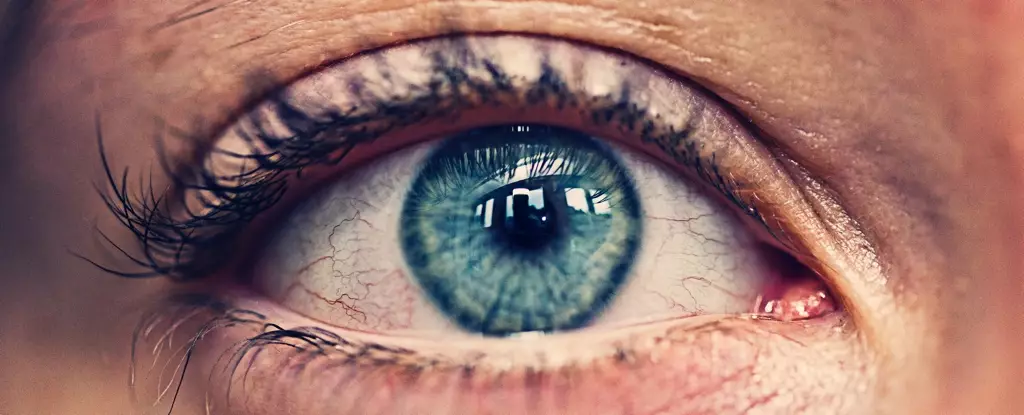Alka Kamble, a 55-year-old farmworker from Jambhali village in Maharashtra, India, represents a growing population facing dire health implications from environmental changes. Her struggle with cataracts, which progressed over five months without medical intervention, exposes the reality faced by many laborers: the inability to seek timely medical care due to time constraints and financial limitations. Kamble’s journey underscores a critical narrative woven into the fabric of agricultural societies, where the relentless grip of poverty often blinds individuals to the serious health risks posed by climate factors.
Kamble’s experience is not isolated. Many laborers toil under harsh conditions, with long hours of exposure to the elements, often lacking adequate protection from the sun. This neglect manifests as health complications, especially when combined with intensifying climate conditions. In India, where extreme heat waves are becoming increasingly common, work environments become hostile, pushing individuals like Kamble to their physical limits. The irony remains: it is these very individuals who contribute to sustaining food systems yet find themselves vulnerable to conditions like cataracts, exacerbated by climate change.
The Science Behind Climate Change and Vision Impairment
Research indicates a direct link between climate change and vision health that often goes unrecognized by the public. In recent studies, particularly by experts like Lucía Echevarría-Lucas, it has become evident that rising global temperatures contribute significantly to eye disorders. One alarming statistic indicates that for every degree Celsius rise in maximum average temperature, approximately 371 additional cataract cases arise per 100,000 inhabitants. As the Earth’s climate continues to warm—recording the hottest surface temperatures in 2024—the effects on eye health will likely spiral out of control.
The human eye is particularly susceptible to heat’s detrimental effects. Heatstroke can severely disrupt the biological processes that protect our eyes. Prolonged exposure to high temperatures leads to the formation of reactive oxygen species (ROS) that inflict damage on the eye’s crystalline proteins, responsible for maintaining lens transparency. With climate patterns favoring extreme heat and prolonged sunlight exposure, the situation worsens, especially in vulnerable populations working outdoors. This predicament raises urgent questions about preventive measures and social responsibility toward outdoor workers.
Broader Implications of Climate Change on Eye Disorders
The spectrum of eye conditions linked to climate change extends far beyond cataracts. Emerging data suggests a rise in ailments such as keratitis and conjunctivitis, heavily influenced by increased UV radiation linked to global warming. For instance, a 2023 study in Ürümqi, China, established that temperatures exceeding 28.7°C (83°F) raised conjunctivitis risks by a staggering 16% compared to cooler days. As allergens proliferate due to longer pollen seasons and increased mold growth, it is evident that climate change acts as a multiplier, amplifying existing health challenges.
Dr. Yee Ling Wong, an ophthalmologist in the UK, highlights that these climate-driven irritants could soon create a public health crisis. If individuals in developing regions face challenges associated with food security and unsafe drinking water—common consequences of climate-induced droughts—they become increasingly susceptible to conditions leading to blindness or severe vision impairment.
Practical Solutions and Global Responsibilities
Addressing the eye health crisis exacerbated by climate change requires immediate action and long-term planning. Vital steps include establishing protective measures for outdoor workers, such as increasing accessibility to shaded areas and regular health checks. Experts like Jesús Rodrigo Comino advocate for simple yet effective solutions, including the use of UV-protective sunglasses and hats. Encouraging healthier lifestyles through optimal nutrition and education about the dangers of UV exposure forms an integral part of mitigating risks associated with climate change.
On a macroscale, addressing greenhouse gas emissions and pollutants is crucial. As climate vulnerabilities affect entire communities, global cooperation becomes necessary. National programs dedicated to controlling blindness, such as India’s initiative to provide affordable cataract surgeries, play a pivotal role in mitigating health impacts resulting from environmental changes. The challenge, however, persists: even these programs cannot entirely shield individuals like Kamble from the compounded threats of climate change that jeopardize their well-being.
The interplay between climate change and eye health is a burgeoning area that requires not just scientific inquiry but societal acknowledgment and advocacy. As environmental changes continue to shape everyday realities, prioritizing eye health will be paramount for vulnerable communities across the globe.

